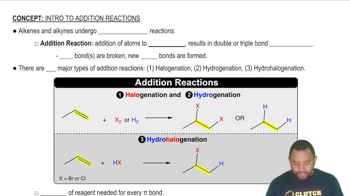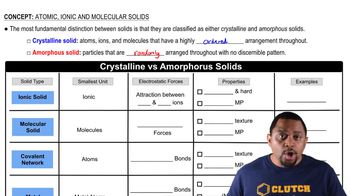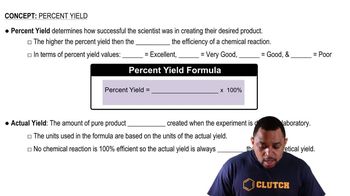Here are the essential concepts you must grasp in order to answer the question correctly.
Addition Polymerization
Addition polymerization is a type of polymerization where monomers with unsaturated bonds (like alkenes) react to form a polymer. This process involves the breaking of double bonds in the monomers, allowing them to link together into long chains. Unlike condensation polymerization, addition polymerization typically does not produce by-products, as the reaction solely involves the monomers combining.
Recommended video:
Monomers and Polymers
Monomers are small, simple molecules that can join together to form larger structures known as polymers. In the context of addition polymerization, the monomers are usually unsaturated compounds that can undergo reactions to create long-chain molecules. Understanding the relationship between monomers and polymers is crucial for grasping how addition polymerization works and its implications for material properties.
Recommended video:
Crystalline vs Amorphous Solids
Reaction Yield
Reaction yield refers to the amount of product obtained from a chemical reaction compared to the theoretical maximum amount possible. In the case of addition polymerization, if the yield is assumed to be 100%, it implies that all monomers are converted into the polymer without any loss or formation of by-products. This concept is essential for evaluating the efficiency and practicality of polymerization processes.
Recommended video:
Percent Yield in Reactions
 Verified step by step guidance
Verified step by step guidance

